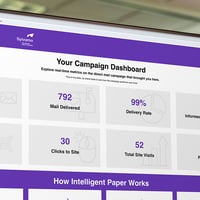The Case for Print Textbooks as a More Effective Way of Learning
Take a peek inside an average American classroom in 2022 and you’re likely to see students using tablets or other e-reading devices as opposed to traditional print textbooks. In fact, the Washington, D.C. Public School District spent about $14 million in 2020 to provide students with tablets for educational use both in the classroom and at home.
While tablets or e-readers do have some distinct advantages over traditional print textbooks, the jury is very much still out on whether these electronic devices are actually more effective in helping students learn — and, in fact, there is a compelling argument to be made that reading on a digital screen versus a print textbook is actually detrimental for students in comprehending and retaining information.
Let’s briefly examine the case for print textbooks as a more effective way of learning by looking at a couple of ways print has the edge over digital in helping students better engage with the material at hand.
No need to scroll with print
It may not sound that significant, but scrolling on a tablet or e-reader can have a very disruptive impact on how students comprehend, retain and recall the information they’re learning. This is in part because the ability to scroll increases the pace at which students read material, and while that increased pace could be argued as a more efficient learning, it’s not necessarily more effective learning with regard to comprehension and recall, as outlined in a study of print textbooks versus e-readers.
It seems that print textbooks help students better absorb, understand and relate to more complex ideas and information. Plus, the fact that print books encourage students to read at a slower pace compared to digital devices increases their ability to recall critical information like the plot points of a novel or statistics in a scientific study.
In fact, a recent study divided students into two groups, one of which read material on a digital device while the other read from a print textbook. When the two groups were asked about a series of chronological events in the material, the group who read via a print textbook demonstrated a stronger ability to reconstruct the series of events as opposed to the group who read digitally.
Print is easier on the eyes… and better for your health
Visual fatigue is a condition where the muscles in your eyes tighten during intense visual tasks. The prolonged tightening of these muscles can result in significant discomfort, and, in extreme instances, headaches or blurred vision.
Even with technological advances in how digital screens are backlit or the accessibility preferences or settings of tablets or e-readers, a recent study revealed that visual fatigue when reading on a LCD screen was significantly higher and occurred much more quickly compared with reading via a print textbook. These findings are of course incredibly important for students of all ages, as the ability to focus for longer periods of time on written material is crucial for proper comprehension and recall.
Aside from print being much easier on the eyes, learning via print textbooks can actually be beneficial to your overall health. A 2014 sleep study revealed that the use of electronic devices like tablets or e-readers can have negative effects on your sleep cycles, specifically the amount of time it takes to fall asleep, and how long you stay in the REM sleep stage, which in part helps your body rest and recharge.
Print textbooks provide fewer distractions
It’s hard to think of too many print textbooks that have apps or games, both of which are quite common on digital devices like tablets and e-readers, and can be major distractions when it comes to absorbing and remembering information. Reading via print textbooks not only helps you better retain specific information, but the distraction-free quality of print also increases your ability to comprehend more abstract thought and draw inferences or subtitles from a given text.
What’s more is that many students actually prefer reading via print textbooks because they don’t have the multitude of distractions that are part and parcel of digital devices. In fact, one study found that 92% of college students said they prefer reading via pages not pixels because the likelihood of distracted or disengaged reading is simply too high.
It’s pretty clear to see the benefits of print textbooks as an important vehicle for effective learning, and a crucial part of a quality textbook is the paper used to print it. Printing on Accent Opaque® can help you create a print textbook that engages a student’s mind and helps them develop a life-long love of learning.





